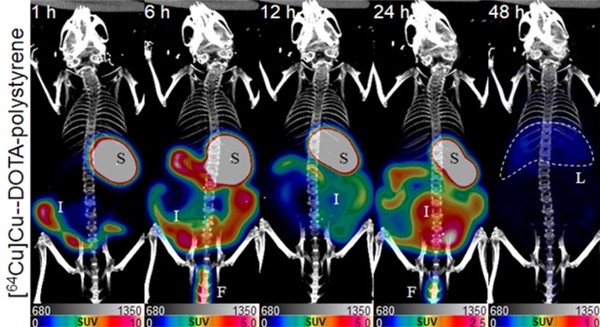The Korea Institute of Radiological Medical Sciences (KIRAMS) said Wednesday that its research team has tracked down the routes traveled by ingested microplastics (MP) in the human body for the first time in the world.

The research team, led by Drs. Kim Jin-su and Kang Choong-mo, made the discovery using positron emission tomography (PET) that utilizes radioactive isotopes to label substances, the institute said.
As the production and use of plastics increase, massive amounts of plastics wastes are found in the ocean. As a result, MPs exposed to the sun and worn by the wind that is degraded to a size smaller than 5mm are commonly found in marine organisms. However, the studies on its impact consumed by humans are just on its first steps. Hence, specific research of tracking routes of the ingested MPs and their impact is in need.
The team used 0.2 micrometers of MP polystyrene that was labeled with Copper-64, a radioactive isotope. Then, it orally administered a new form of radiolabeled polystyrene with Cu of 60 micrograms to mice. And the team made the time-lapse analysis of PET imaging within mice’s bodies after watching the absorption path of MPs for 48 hours.
Cu-DOTA-polystyrene remained in the stomach and intestine for 24 hours before most of them were excreted. On the other hand, the amount of Cu-DOTA-polystyrene in the liver increased five times after 48 hours compared to the amount after the first hour.
To verify the distribution of Cu-DOTA-polystyrene in other parts of the body that PET images could not observe, gamma rays of Cu-DOTA-polystyrene were detected from removed organs. Thus, it was confirmed that Cu-DOTA-polystyrene had spread all over the body after the first hour of consumption.
The study succeeded in labeling MP polystyrene with radioactive isotope Copper-64, and the use of PET tracing visualized the distribution of Cu-DOTA-polystyrene orally administered.
The discovery was meaningful by providing the possibility of future clinical trials of the impact of MPs in our body, the institute said.
“We have managed to reveal the specific absorption routes of micro-plastics within the body, a global issue,” the two researchers said. “We will follow up with a study to analyze its toxic effects.”
The study results were published in the online edition of the Journal of Nuclear Medicine on July 2.

